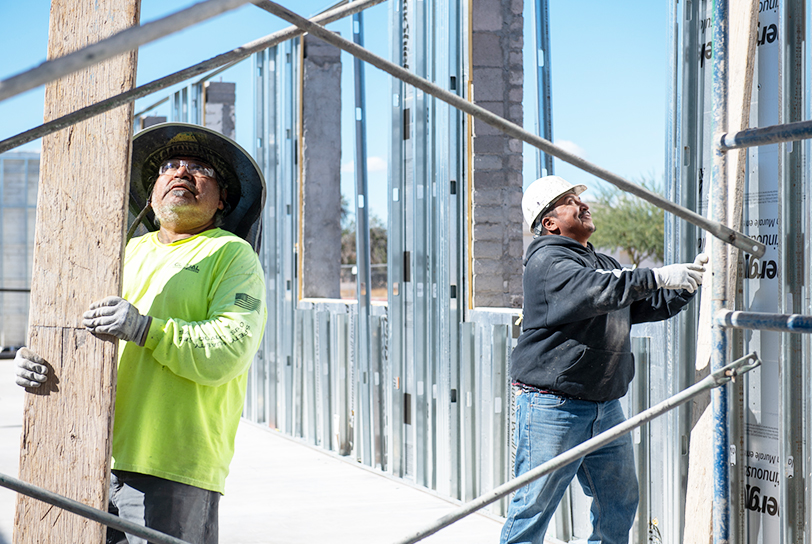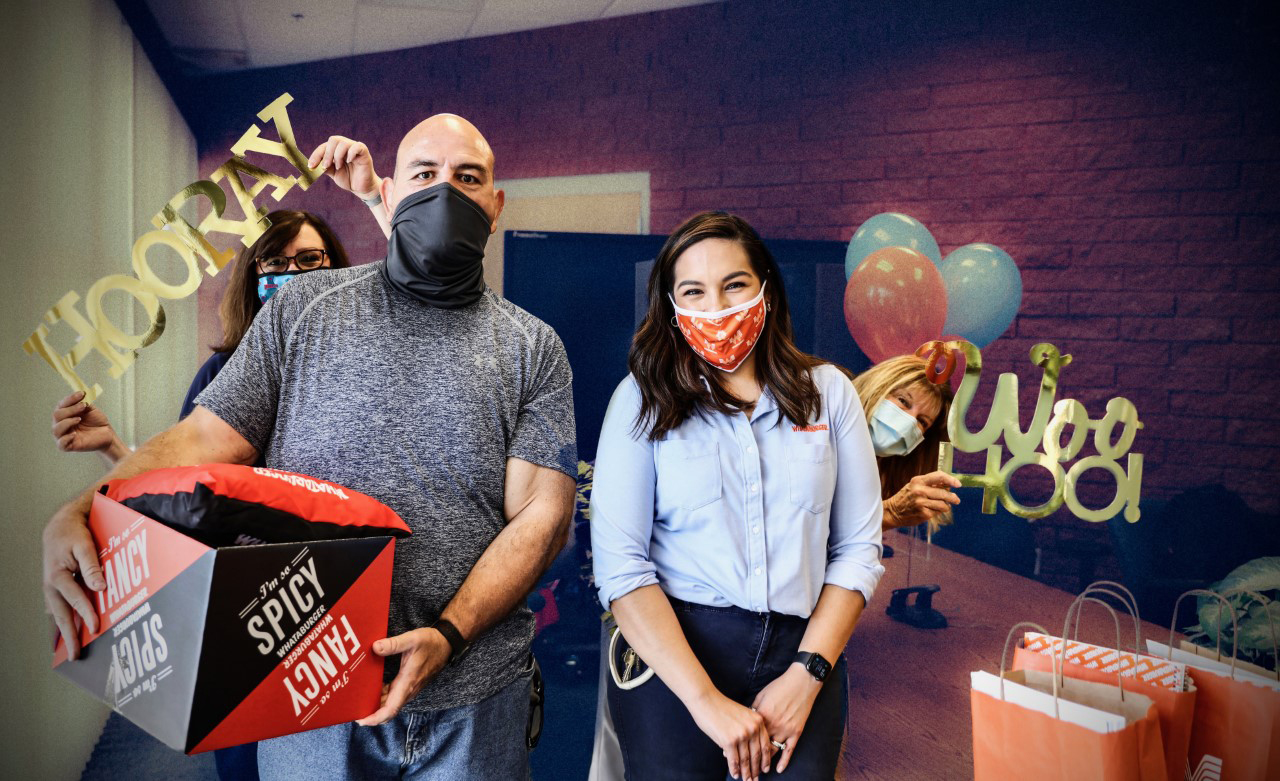VIEWS: 1842
December 17, 2024Historical Salt River Day School Being Rebuilt by Community-Member Hands
Inside a Dallas Construction office trailer stationed at the Salt River Day School construction site, a couple dozen people file in around noon and gather for a warm catered meal. Most of them are Salt River Pima-Maricopa Indian Community members who are working on some phase of the project to reimagine and preserve the structures of the Day School building and the grounds they sit on as a part of a revitalized SRPMIC cultural campus.
With the roof coming along and the walls continuing to be framed, the Community members congregate for a group photograph on the remodeled stage in the middle of the structure, which remains exposed to the outside air in a courtyard. The stage is a spot at the site that you’ll hear many Community members who attended the school, which closed in 2007, reminisce about.
The walls of the original Day School were built from about 1934 to 1935 by Community-member Phoenix Indian School students, who were paid a salary to build the structure as part of their vocational training.
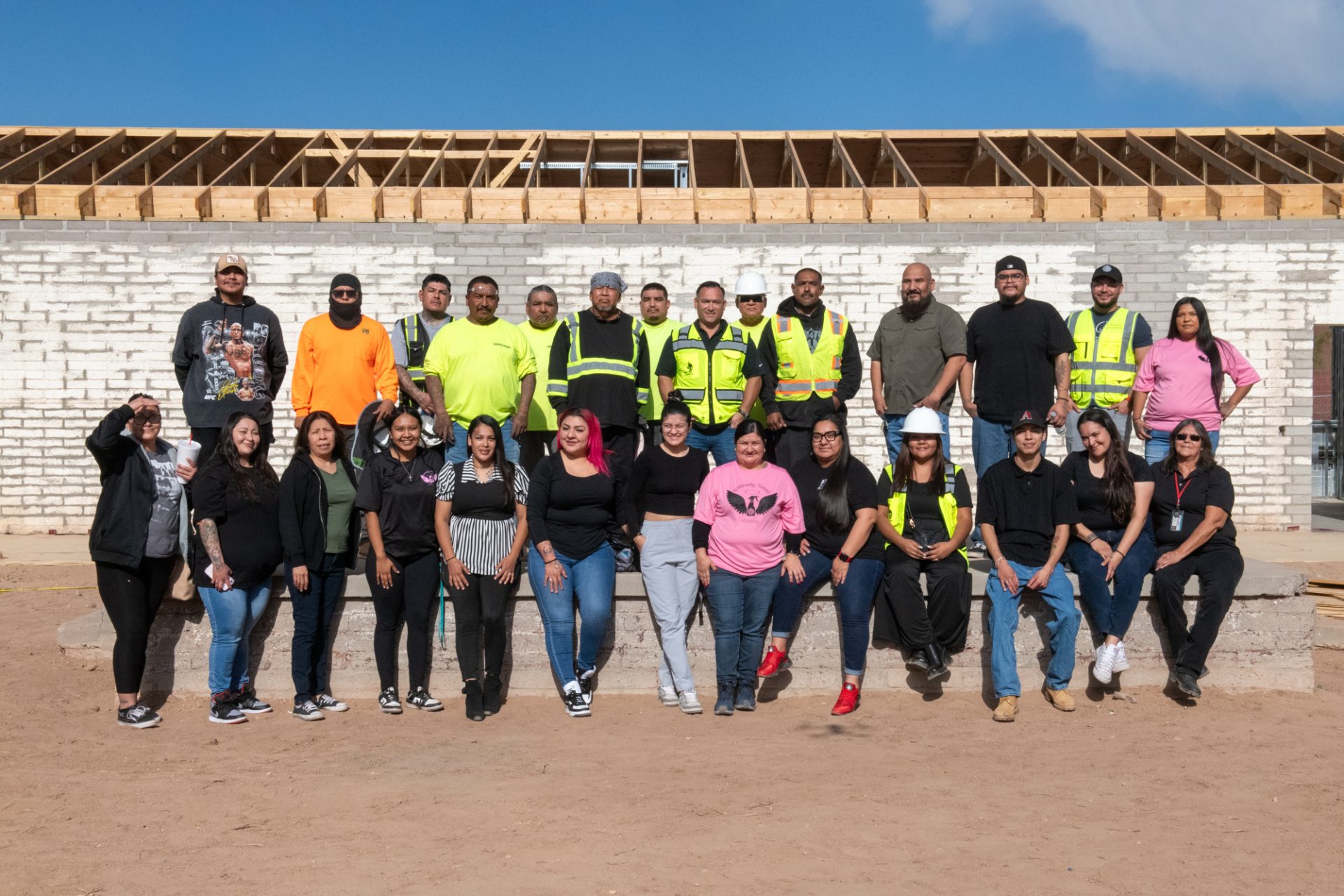
SRPMIC member David Dallas, president of Dallas Construction, believes it is crucial for Community members to be the ones to build their own Community as much as possible.
“By doing so, we are not only preserving our history, but we are also creating history for future generations,” said Dallas, whose company is contracted with the Community to build out the site.
“A hundred years from now, Community members will look back and talk about what we did, and I hope our hard work will inspire them with the same pride that the generations before us have given to us.”
Dallas said that with this project, his first vertical build under Dallas Construction, he’s been able to maintain an average of 20% Community-member participation, with a peak of 50% earlier on in the project. A vertical build is a structure that extends upward from the ground with more than one story or floor.
“This achievement has been a collaborative effort with the SRPMIC Human Resources Department, which has done an outstanding job communicating with us and providing reliable, hardworking Community-member workers who consistently show up on time,” said Dallas, who said he’s also received strong support from Public Works in these efforts. “I could not have asked for a better project to launch my company and contribute to our shared legacy.”
Other Community member-owned businesses that are contributing to the project include Heavenly Touch Cleaning, Red Mountain Engineering, Quintero Development, Dallas Pro Painting and Stevens Cleaning Solutions.
Many of the Community members who are working on the renovation attended the Day School at some point in their lives. Some of them shared their contact information with SRPMIC Cultural Resources Department historian David Buhl, who has been working with them to assemble their collective experiences, whether positive or negative, through oral history interviews.
Buhl said that in documenting their experiences, he’s enjoyed getting to know Community members more.
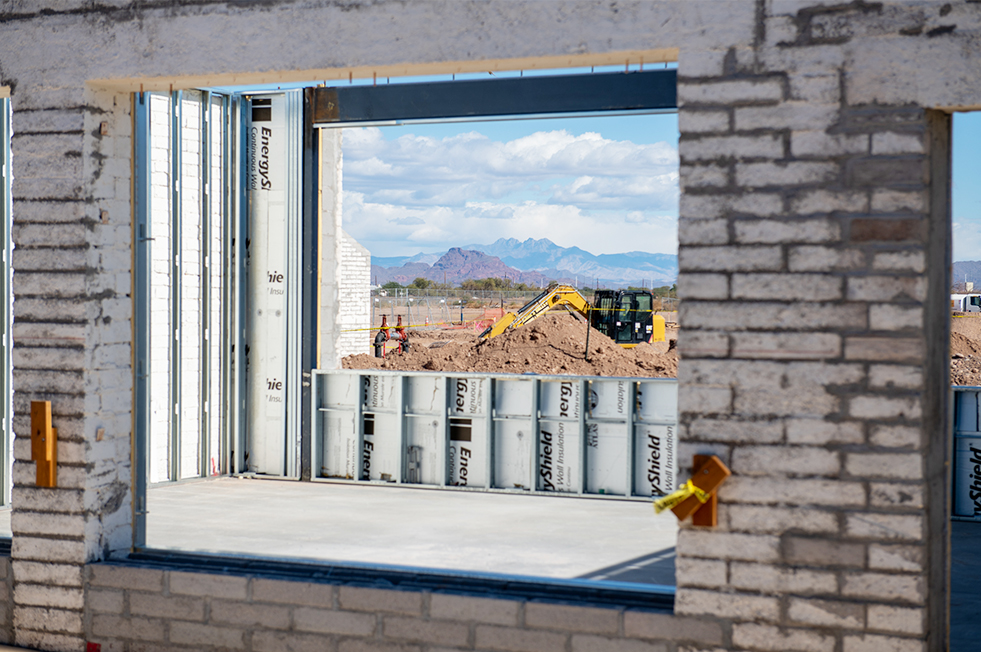
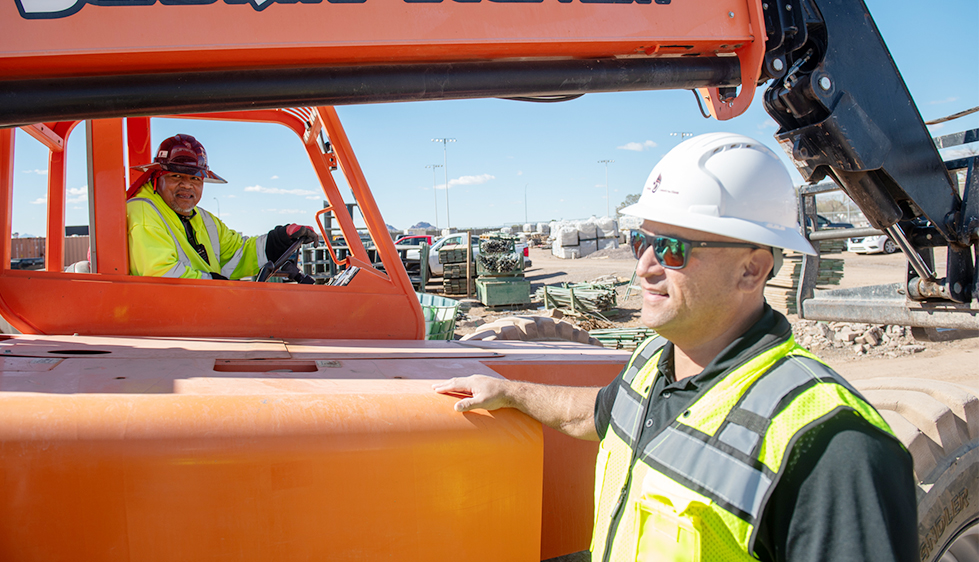
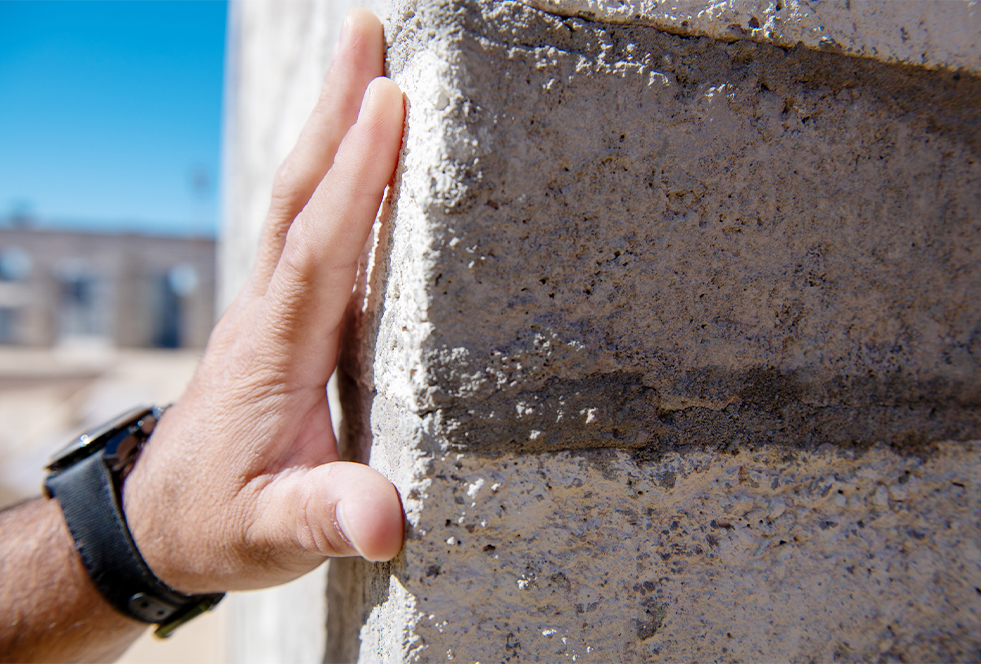
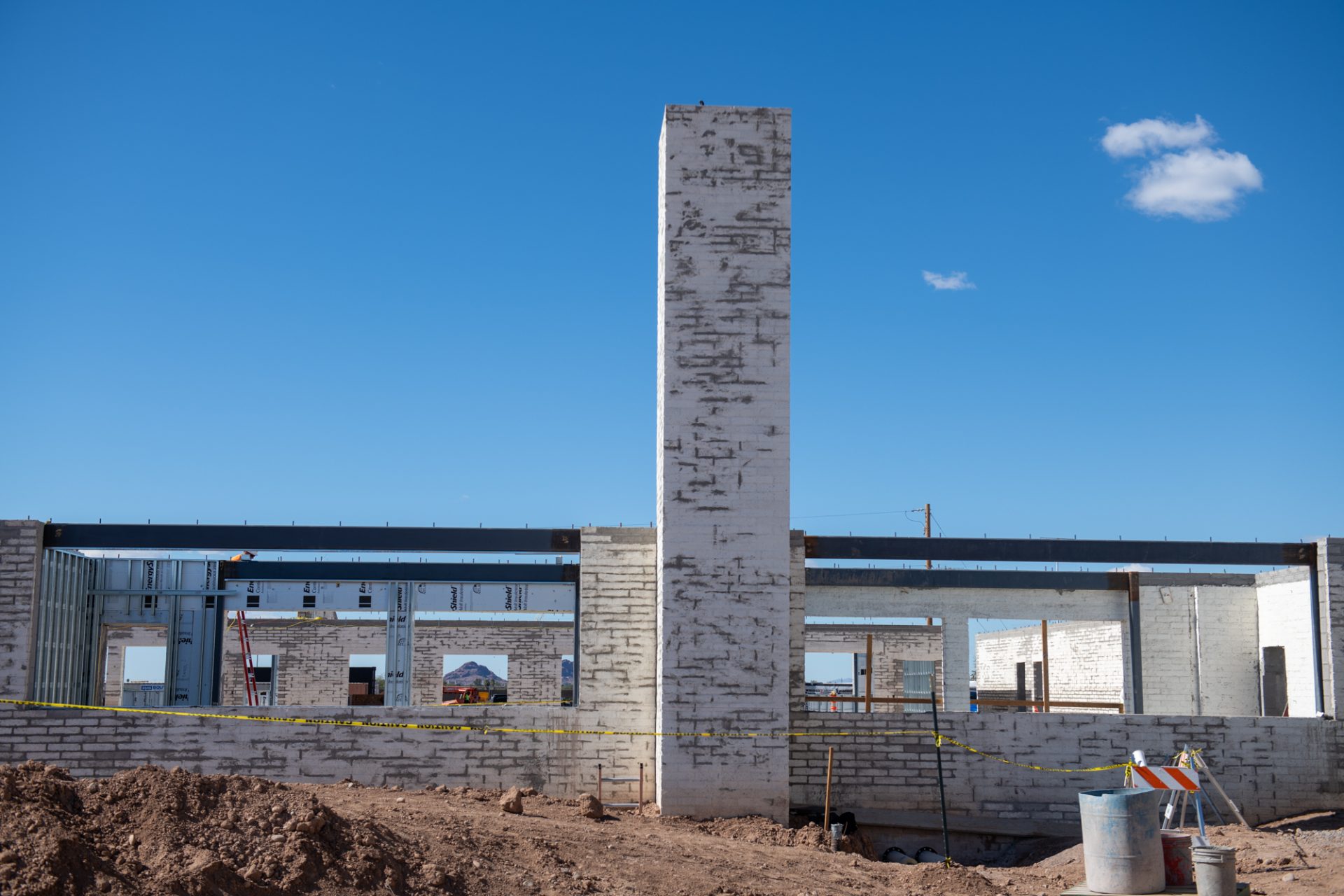
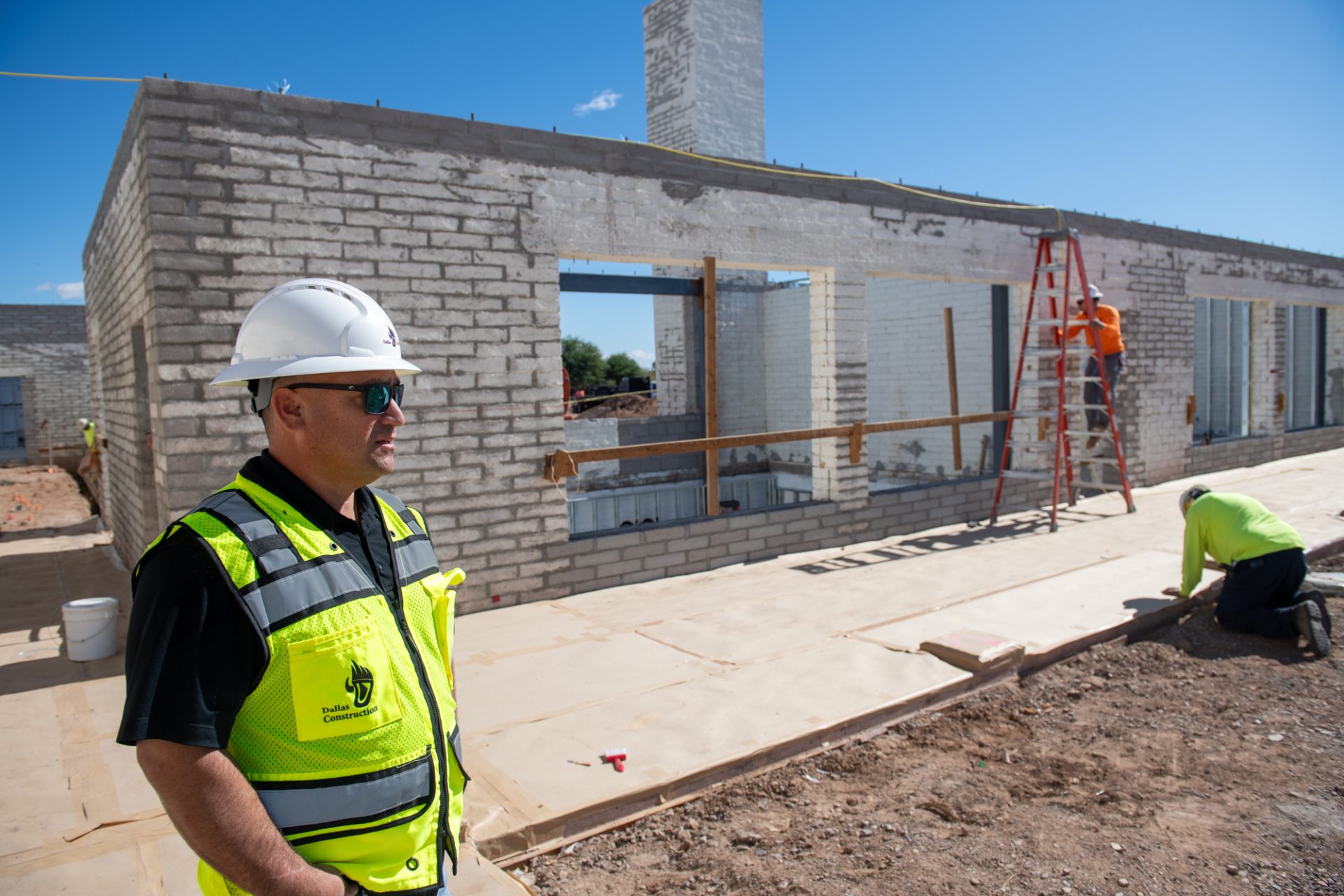
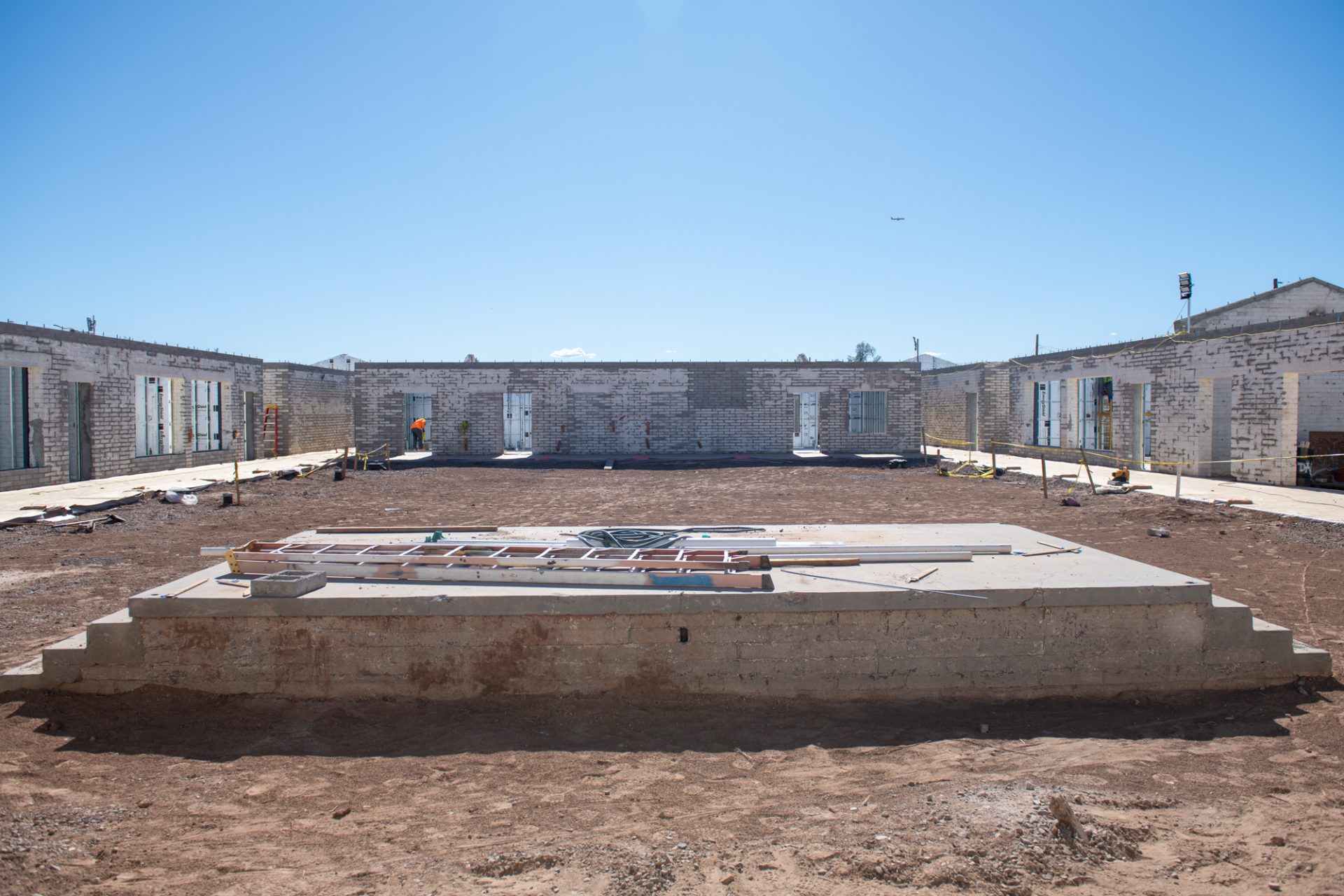
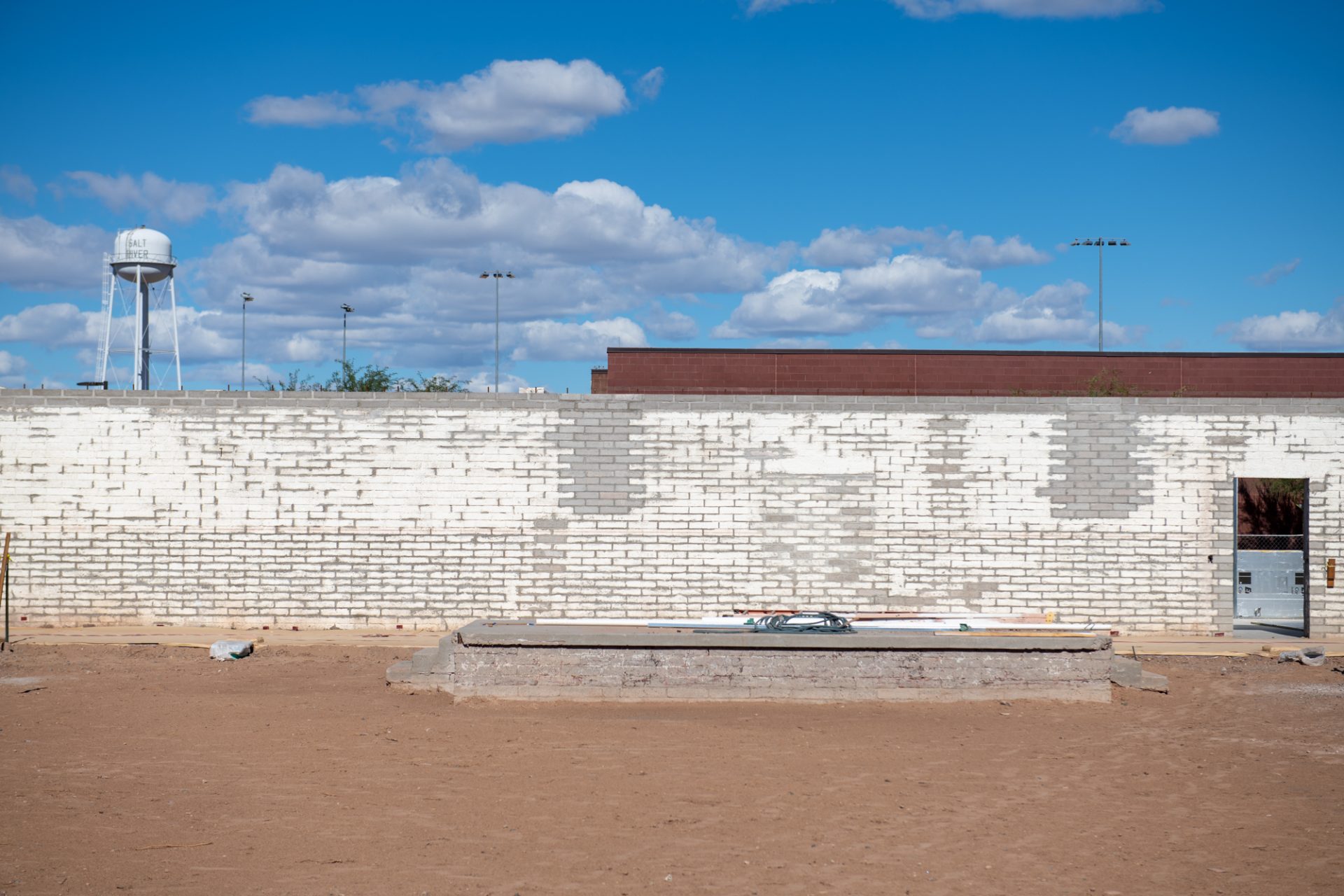
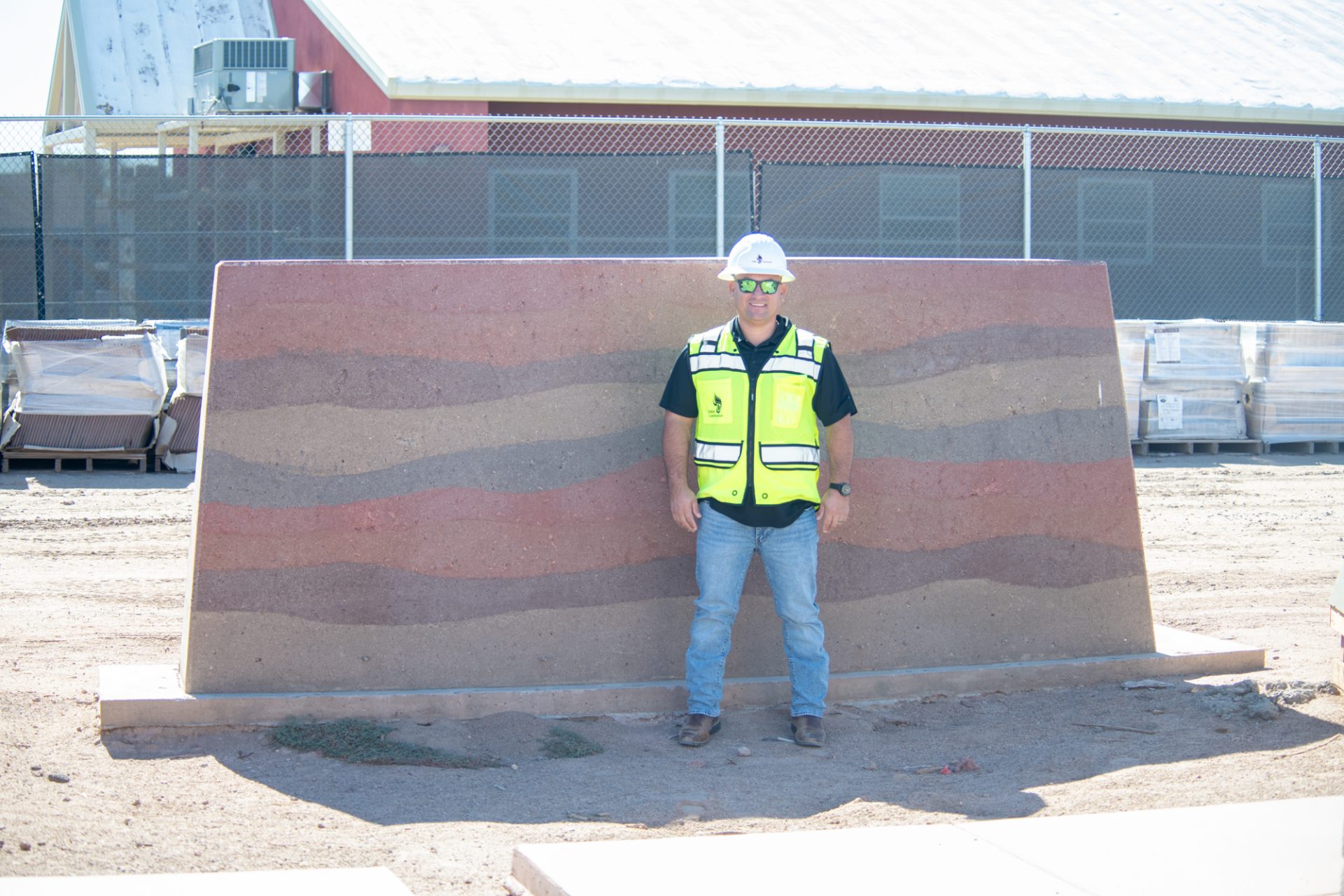
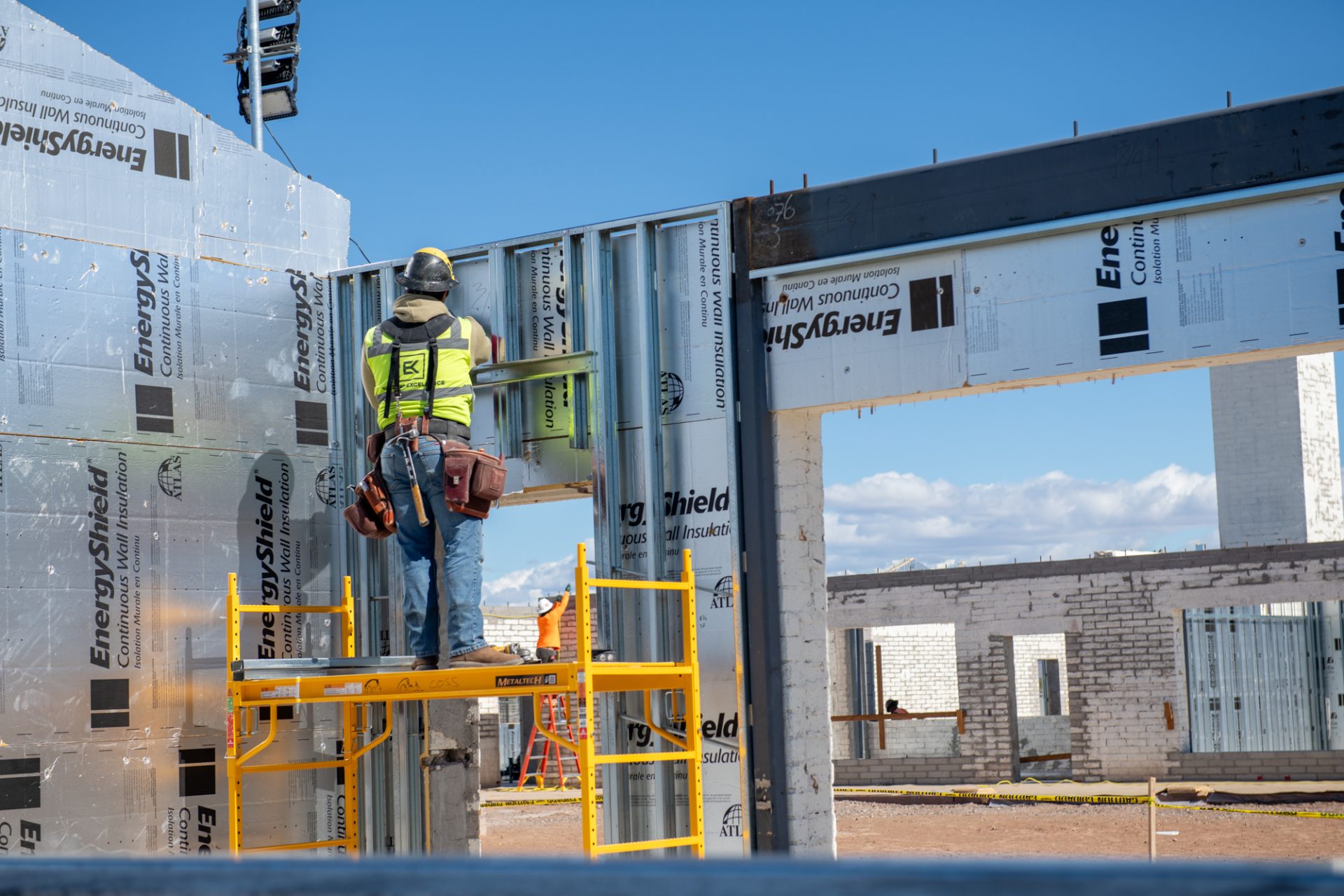
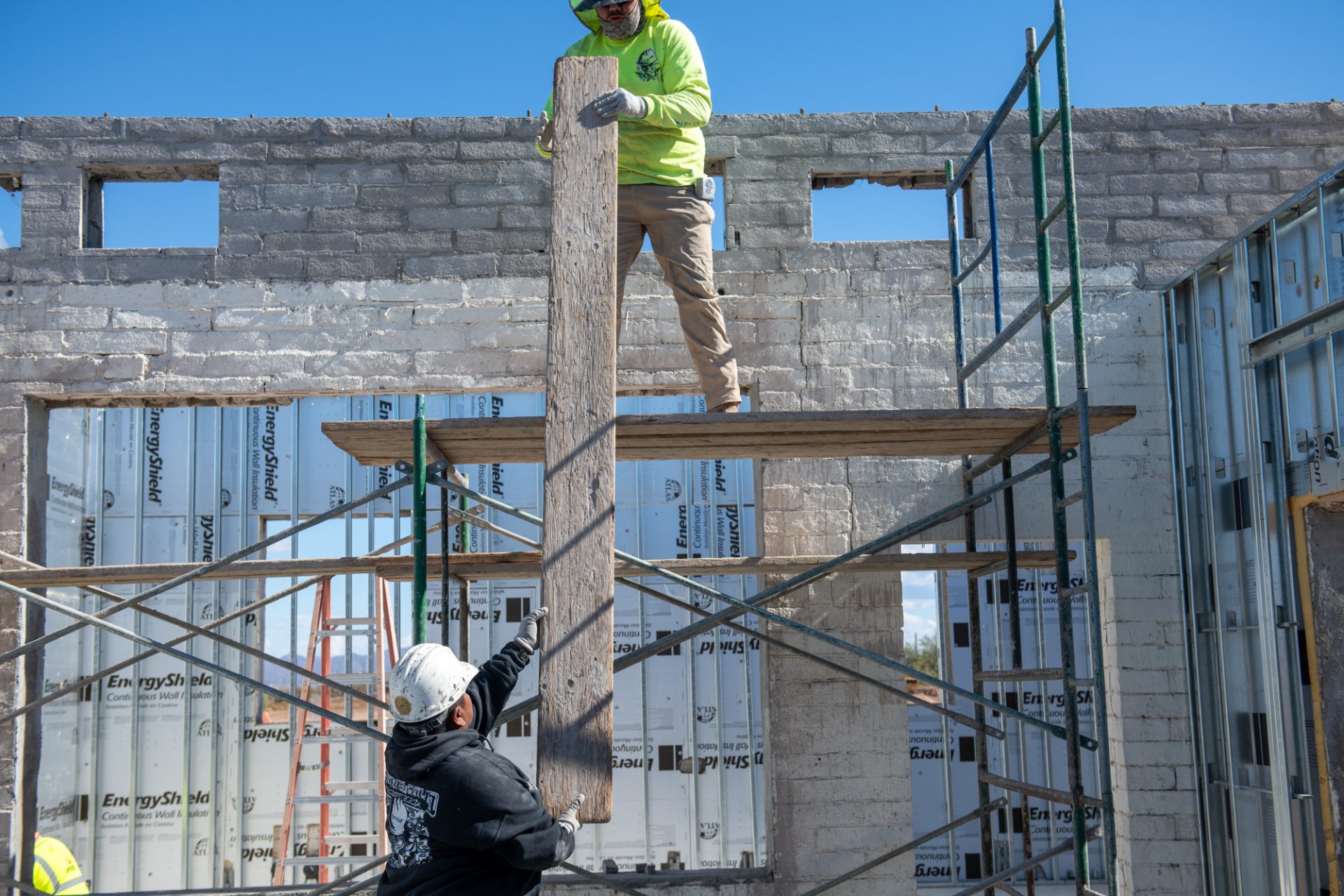
“When we talk about their experiences or look through photos together and talk about what kind of memories they bring up, it provides a much greater depth to our understanding of the school’s history and why it matters,” said Buhl. “In the coming year, I am hoping to expand opportunities for people to share their stories or memories in more convenient ways.”
The ongoing effort to document the experiences of Community members is part of an overarching plan that goes back decades to provide and support the most cultural services for the most Community members.
Gathering memories from Community members keeps the story of the Day School alive as the site takes on a new purpose. The Day School site is planned to become a cultural facility with workspaces for CRD staff all concentrated in one area as to improve the department’s workflow, collaboration and synergy.
In 2004, the Strategy B team and the Cultural Resources Department, under the guidance of Director Kelly Washington, recommended the completion of the greater cultural center project that had been stalled in the 1990s.
When Washington became director of the museum at that time, he knew that plans for the cultural center had existed but had gone dormant.
“I just hated to see the information, you know, just be shelved,” said Washington. “I wanted to see this vision of a cultural center or campus come true.”
With so much history built into the area where the Day School structure is, Washington said that this place made the most sense for a Community cultural center.
“The history is in the walls,” said Washington, emphasizing the Community hands that went into building the original structure. “If walls could talk.”
One of the main issues for developing at the Day School site was that it was on Bureau of Indian Affairs property, which needed to be transferred to the SRPMIC to carry out the plan. The transfer process took over a decade, and in June 2019, the BIA land was finally transferred to the SRPMIC.
With the completion of the new Cultural Repository, which began operating during the COVID-19 pandemic in 2021, and a recently completed demolition and abatement of the old Repository, the planned cultural center is steadily coming to life, with the Day School project being slated to finish in fall 2025.
Stay tuned for more updates about the cultural center project in future issues of O’odham Action News as the work nears completion.

